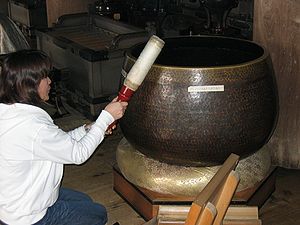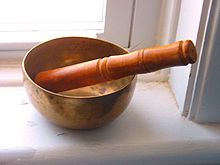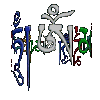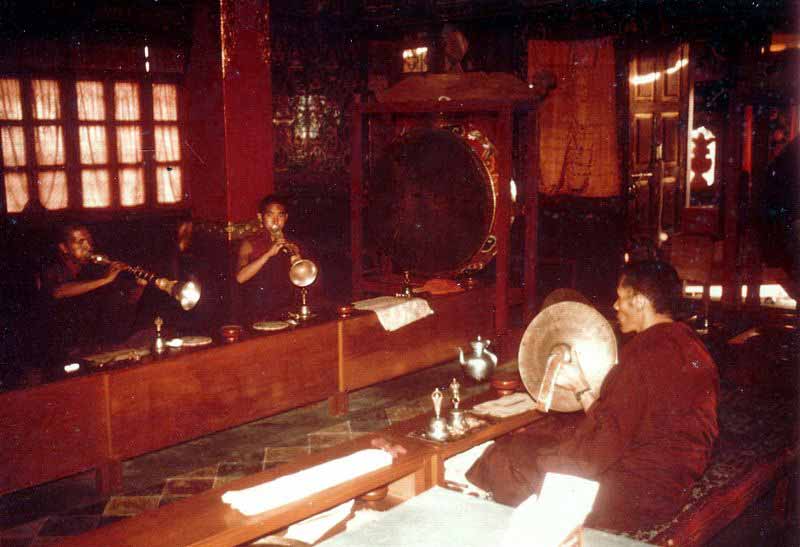 |
|
Tibetan monks - Boudhanath, Nepal 1973 |
Sound
of the conch shell for remembering the dead (2 min.)
Invocation
of Deities (16 min.)
Auspicious
Verses of Guru Puja (8 min.)
Hymns
and music for Inviting Deities (2 min.)
The
Vase Initiation of Yamantaka (2 min.)
Dissolving
the Visualization of the Field of Merit (10 min.)
(from the monks of
the Dip Tse Chok Ling Monastery, Dharamsala, recorded 1989 on Sacred Ceremonies
vol.2)
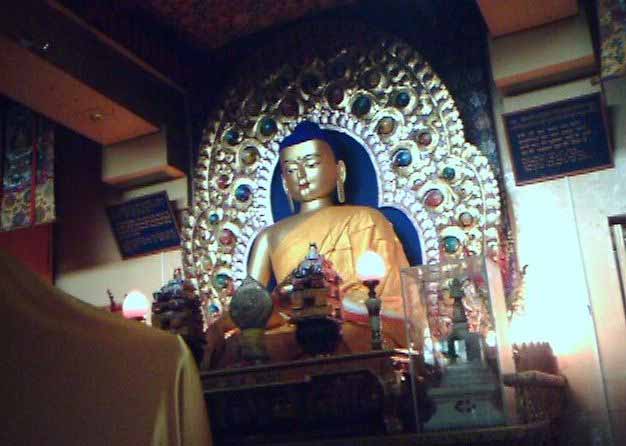 |
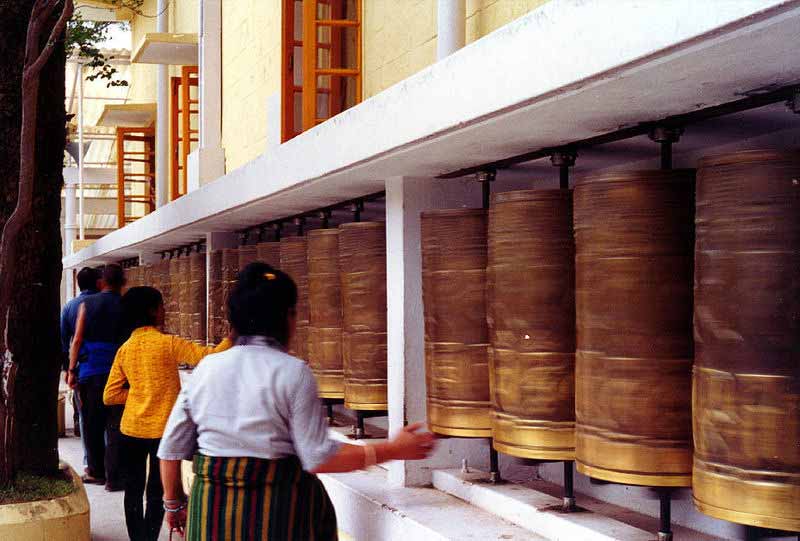 |
|
Shakyamuni Buddha at the monastery of Dalai Lama
Tenzin Gyatso, Dharamsala. |
Prayer Wheels outside a monastery, Dharamsala |
When the
Dalai Lama
left Tibet in 1960, Indian Prime Minister Jawaharlal Nehru offered to permit him
and his followers to establish a "government-in-exile" in Dharamsala,
northern India. Since then, many Tibetan exiles have settled in the town,
numbering several thousand. Most of these exiles live in Upper Dharamsala,
or McLeod Ganj, where they established monasteries, temples and schools.
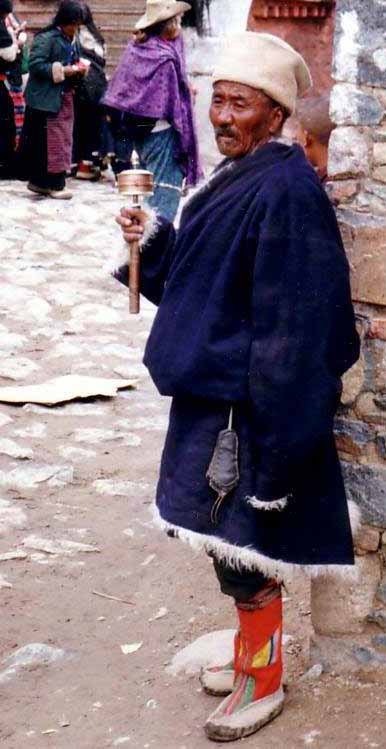 |
|
Pilgrim with prayer wheel, Tsurphu
Gompa, Tibetan Autonomous Region of China, 1993. |
An exclusively Tibetan Buddhist prayer instrument, the
Mani prayer
wheel can be made of various materials, including metal, wood, leather,
or even coarse cotton, and come in many different sizes, from a hand-held mani
prayer wheels, often used by pilgrims, to a series of large stationary metal
wheels situated along a wall of a monastery. There are also "digital
prayer wheels," which send a peace prayer from one's hard drive!
Regardless of size and material, their function remains the same, that of
prayer, a conduit to the spiritual.
Each
mani wheel
bears a mantra or divine prayer, as an inscription on its outer
surface, as well as printed on paper thousands of times inside the wheel. The most basic
mantra is the Aum (Om). On prayer wheels,
the most commonly used mantra is Om Mani Padme Hum.
It is the mantra of the bodhisattva of compassion, Avalokitesvara
(India) or Chenrezig (Tibet), which the Dalai Lama is also said to be an
incarnation. Voicing the mantra from left to right would be: ohm mah nee
padh may hum. The meaning of the six-syllable mantra is complex, but
includes: om - a mediation on bliss; ma - patience; ni
- discipline; pad - wisdom; me - generosity; and hum
- diligence. The middle of the mantra, mani padme, is interpreted
to mean the "jewel in the lotus." When activated, the mantra is
a prayer that invites the compassion of Chenrezig.
For the prayer to
be most effective, a person must first speak the mantra aloud, then in a calm
meditative state without speaking, spun the wheel clockwise, the direction the mantra
is written, and then finish by once again by speaking the mantra aloud. The
faster the spinning of the wheel, the more potent the prayer.
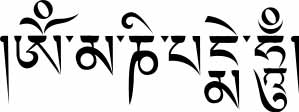 |
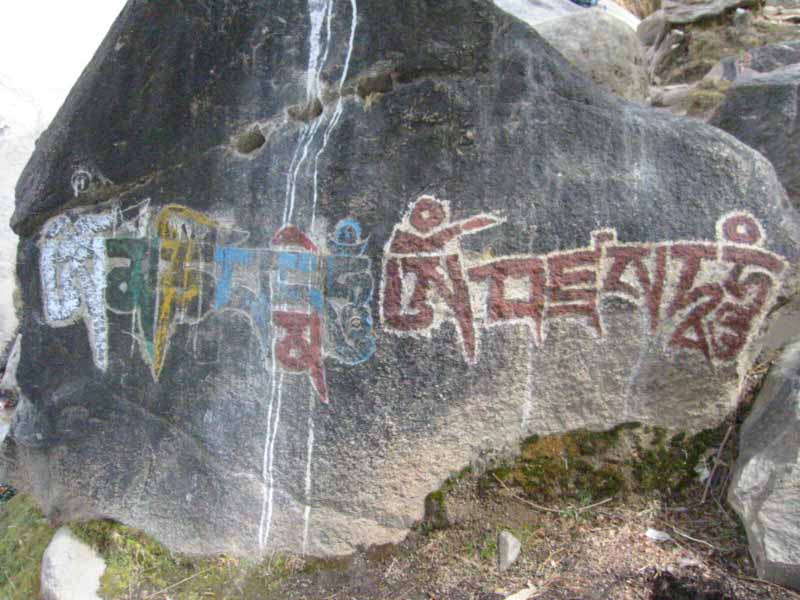 |
| The Om Mani Padme
Hum mantra in Tibetan
Script. |
"Om Mani Padme
Hum" written in Tibetan script on a rock outside the Potala Palace
in Tibet. |
return to schedule
